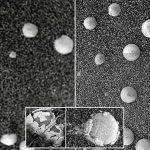Medical Technology in Australia is worth $6.1 billion and is projected to reach a US market size of $8bn in 2023. It’s a global frontrunner extending beyond the medical sector, encompassing a diverse spectrum within the medical field.
The facets that constitute Medical Technology span Medical Equipment and Supplies, Medical Technology, and Education and Training.
One of the largest growing industries in Australia is Medical Technology. Australia is rapidly becoming a world leader not only in the medical arena but in all areas of the medical field. Medical Technology branches are Medical Equipment and Supplies,
Medical Technology, and Education and Training. With these branches in place, Australia is quickly becoming known as a top destination for Medical professionals.
The medical technology industry in Australia began in the mid 1940s. As the first post-war industrial boom began, the health care industry became more developed and sophisticated. It also started an incredible growth that continues to this day.
Medical Technology In Australia Continues To Revolutionise The Healthcare Industry
Throughout our life journey, medical technology (MedTech) plays an indispensable role. MedTech is integral in detecting, diagnosing, treating, and managing various healthcare conditions, supporting patients across the nation to enhance their well-being.
From implantable devices like pacemakers, personal gadgets for diabetes management, X-ray machines and MRI scanners for cancer detection, to surgical robots assisting in complex surgeries, and personal technologies enabling effective chronic disease management, the array of devices and equipment utilised in healthcare empowers Australians to lead fulfilling lives.
This reality has never been more pronounced than during the COVID-19 pandemic. Australia’s MedTech sector stood at the forefront of the country’s response, collaborating closely with the government to innovate, procure, and distribute crucial equipment such as:
- Testing kits
- Personal protective gear (PPE)
- Ventilators
- Essential apparatus for intensive care units
- Remote Patient Monitoring & Virtual Care.
- Digital Therapeutics
- Wearables in Healthcare
- Organ Care Technology & Bioprinting
- Cancer Immunotherapy
Right from the initial stages of the pandemic, MedTech played a life-saving role, providing invaluable support that enabled our healthcare personnel, systems, and policymakers to mount an effective response.
Medical Technology Is Supporting The Health of Australians
The availability of cutting-edge medical technology is crucial for promptly diagnosing and treating health issues faced by Australians. In the span between July 1, 2020, and June 30, 2021, more than 185 million pathology and diagnostic services – averaging over 500,000 daily – were administered.
These services played a pivotal role in detecting and diagnosing ailments like cancer, cardiovascular disease, stroke, and diabetes. They facilitated the timely initiation of critical treatments, offering individuals the best chance to manage their conditions effectively.
Additionally, during this period, a staggering 128,083 Australians – an average of over 350 per day underwent surgeries to replace joints like hips and knees, which greatly improved their overall quality of life.
The significance of MedTech extends beyond individual care and encompasses the well-being of all Australians. This is especially true for the nearly half of the population grappling with chronic diseases such as diabetes, arthritis, and kidney disease. Innovations within the field are elevating the standard of care, leading to enhanced health outcomes and an improved quality of life.
However, the impact of the MedTech sector transcends the devices it produces. The businesses engaged in MedTech, as revealed by a survey, engage in extensive collaboration with the healthcare system.
The collaboration entails partnering with healthcare providers (45%), providing education and technical support (48%), and sponsoring clinical trials (53%). These collaborative efforts also drive innovation, reshape healthcare experiences for patients, and ultimately contribute to saving and improving the lives of Australians, all while providing cost savings to the Australian health system.
Australia’s MedTec Sector Contributes To The Economy
Australia’s MedTech sector plays a pivotal role in safeguarding the health of Australians, contributing significantly to the nation’s research and development landscape and the broader economy.
Based on comprehensive surveys, analyses, and a meticulously crafted methodology employed during this assessment, it is estimated that approximately 17,000 Australians were directly employed within the MedTech field in the fiscal year 2021/22.
Additionally, an extra 34,000 employees were engaged in roles that provide inputs essential to the MedTech industry’s operations. A noteworthy statistic is that women comprise more than half (51 percent) of the overall MedTech workforce, with a senior representation of women that surpasses the national average.
The Australian-based operations of organisations within the MedTech sector achieved a commendable gross revenue of $11.4 billion in the fiscal year 2021/22. This figure reflects an annual growth rate of 6.2 percent over the preceding two years.
Considering input costs, the MedTech sector’s cumulative contribution to the nation’s gross domestic product (GDP) in 2022 amounted to $5.4 billion.
This encompasses a direct GDP contribution from the MedTech industry totaling $4.1 billion, coupled with an indirect GDP contribution originating from the entire MedTech supply chain amounting to $1.4 billion.
This impressive performance indicates a nominal compound annual growth rate (CAGR) of 5.9 percent over the previous biennial period.
The Future Of Australia’s Medical Technology
Progress in the field of MedTech stands as a cornerstone in our nation’s relentless pursuit of enhancing the health and well-being of every individual across Australia.
These advancements hold the key to not only improving the lives of Australians but also to alleviating the weight of disease that profoundly affects patients, their families, our healthcare infrastructure, and the overall productivity of our nation.
The significance of these strides in MedTech cannot be overstated; they are a tangible reflection of our commitment to fostering a healthier populace. The power of these innovations is not some distant promise – it is a present reality.
Breakthroughs are actively reshaping the landscape of healthcare, fortifying our ability to detect diseases at their earliest stages. By harnessing cutting-edge technology, we are equipping medical professionals and patients alike with an arsenal of potent tools that are transforming the way health conditions are managed.
No longer confined to the realm of imagination, these advancements translate into concrete actions that are redefining the healthcare narrative. Diseases that were once elusive can now be intercepted and addressed at their inception, fostering a proactive approach that ensures better outcomes.
Empowerment is a central theme, as patients gain more control over their health journeys, aided by technologies that empower them to make informed decisions and collaborate more effectively with their healthcare providers.
The ripple effect of these MedTech marvels extends beyond individual patients. Families experience a newfound sense of relief, knowing that their loved ones are benefiting from cutting-edge care.
Our healthcare system is poised for optimisation, armed with tools that enhance diagnostic accuracy and streamline treatment strategies.
On a grander scale, the enhanced health of our citizens contributes to a more productive nation, as healthier individuals are better equipped to actively contribute to the fabric of society.
In essence, the evolution of MedTech represents a pivotal chapter in our ongoing mission to cultivate a healthier, more resilient Australia.
As we stand on the precipice of even more remarkable advancements, it is crucial to recognize that these innovations are more than mere scientific achievements – they are vehicles of hope, actively working to rewrite the narrative of health and well-being for every Australian
Addressing Current MedTech Challenges
Prominent Obstacles Hindering Market Entry: A significant majority of respondents from the survey have indicated that the Australian healthcare market poses substantial challenges when it comes to fostering local product and service development as well as expanding market reach.
Notable concerns included notable delays in obtaining regulatory and reimbursement approvals, prolonged timeframes for market entry, and a lack of clear policy direction.
A resounding demand has emerged for the establishment of a streamlined market access framework that addresses the intricacies of the current fragmented system, unifying regulatory and procurement processes.
Capitalising on Existing Healthcare and Innovation Fortes: The perpetual shortage of talent, whether locally or globally, continues to present a persistent hurdle. The survey underscored the robust collaboration between the MedTech sector and researchers, clinicians, and healthcare providers.
Australia possesses the potential to mitigate the talent deficit by harnessing and nurturing collaborations within the MedTech sphere. By capitalizing on these synergies, the nation can effectively address some of the existing talent gaps.
Unlocking Future Value Generation within MedTech: Positioned as a critical catalyst for elevating the health status of Australians, the MedTech industry assumes an indispensable role. It is imperative to ensure that each dollar invested in MedTech yields substantial returns, thereby ensuring the longevity and sustainability of the Australian healthcare system.
By harnessing the dynamic innovation ecosystem and fostering seamless collaboration with our world-renowned healthcare sector, Australian MedTech stands poised to amplify its impact, ushering in enhanced efficiencies and delivering a more comprehensive array of benefits.
Cutting-Edge Medical Technologies
Medical research and development in Australia have produced cutting-edge medical technologies that have improved the health care of many in Australia and around the world. Some of these medical technologies that have been developed and produced include:
1. Electrosurgery and laser surgery. These two medical technologies have revolutionised the health care system. Both of these technologies have been key players in the vision of the future of health care.
In particular, electron microscopy and tissue engineering are being utilised to create new body systems and technologies that will make the human body more resistant to disease. The vision of the future for Australia is focused on the development and manufacture of these cutting-edge medical technologies.
2. Bio-medical technology. Bio-medical technology involves the use of human-assisted therapy. Using bio-medical technologies, healthcare practitioners can now perform a range of advanced medical treatments using the body’s own healing power. This is opening up an entirely new and much more promising line of healthcare for those suffering from diseases such as cancer.
3. Medical Technicians. Medical technologists are an important part of Australia’s medical science system. They are responsible for the design, fabrication, operation and maintenance of computers that are needed for the administration of medical practice.
Medical technicians can work directly with patients, or they may be employed by a medical facility in which they would be employed as an administrative assistant. The responsibilities of a medical technician may vary depending on where they work.
4. Education. Medical education has come of age in recent years. Many of the world’s top hospitals and medical centers are located in Australia. There are also many different types of schools that provide training in various medical technology areas around Australia. These educational facilities are an important part of the medical industry in Australia.
5. Healthcare research and development. Research and development in many different fields are an important part of the medical industry in Australia. This is critical to the advancement of medical technologies and to finding new treatments and prevention methods for diseases.
Pharmaceutical companies in Australia are focusing their efforts on many different types of medical technology options available to them. As a result, there are many different types of new treatment options being tested all the time.
6. Advanced medical treatments. Advances in medical treatments are becoming more widely accepted throughout the world. In Australia this means that medical treatments such as cancer treatments are becoming more readily available.
Cancer has become one of the top ailments that people in Australia suffer from, which is why so many advancements have been made in the medical treatments for this disease.
7. Managing the aging processes. The aging process varies greatly among different people. This means that medical treatments available to older individuals need to vary as well. Medical professionals in Australia have recognised the importance of accepting all patients as they grow older and have taken the time to develop medical treatments that will help them age gracefully.
Medical professionals in Australia are also constantly researching new ways to improve the aging process and offer patients a better quality of life.
8. Medical equipment. Advances in medical technology allow medical professionals to perform many different types of operations safely and efficiently. The medical equipment that is used often makes the difference between life and death for many patients and medical professionals.
It is important for patients to be aware of what medical technology is available to them and the type of equipment that can help them lead a normal, healthy life.
Medical technology advancements in many different aspects of the healthcare field are changing the way that people live their lives. The advances in this area have made it much easier for patients to live with a disease or illness that in the past would have been devastating to them.
Proper research and development in this area are necessary for the continued advancement of the medical professionals and the advancements in healthcare as a whole.
The advancement of medical science has necessitated the adoption of improved medical technology. The rapid advancements in technology are also responsible for the reduced cost of implementing these technologies.
Australia’s Medical Devices Market Poised to Hit US$6 Billion in 2023
Australia’s medical devices sector is on the brink of a remarkable milestone, with projected revenues expected to soar to a staggering US$6 billion by the year 2023. Among the various segments within this thriving market, Cardiology Devices stands as the undisputed leader, with a forecasted market volume of US$1 billion in the same year.

This promising trajectory is set to be further accentuated by a consistent annual growth rate. A Compound Annual Growth Rate (CAGR) of 6.09% from 2023 to 2028 is predicted, propelling the market to unprecedented heights. Industry analysts predict that this robust expansion will culminate in a monumental market volume of US$9 billion by the year 2028.
As innovation continues to steer the course of the medical devices landscape in Australia, this projected growth underscores the sector’s vitality and its integral role in shaping the future of healthcare.
With Cardiology Devices leading the charge, and a steadfast growth trajectory mapped out, Australia’s medical devices market is positioned to make a resounding impact on the global stage.
The healthcare industry is making steady advances with the introduction of the latest technologies. Medical technologies are still at early stages of development and there are still limitations to its applications. Nevertheless, the technology has made significant contributions to the medical field.
The latest technologies in the medical industry use the biotechnology to provide improved solutions to many medical problems. It plays a key role in various fields such as diagnostics, vaccines, energy therapy, organ transplantation and surgery.
Due to the ever-increasing number of health problems and lengthened life expectancy, medical technology is of immense help to the healthcare industry. The technologies are utilised for the treatment and prevention of various diseases like cancer, Alzheimer’s disease, Parkinson’s disease, infertility, birth defects, etc.
Biotechnology is a relatively new field of medical science that deals with the development of useful medicines from genetic resources.
It also involves the use of micro and superorganisms for the development of useful medicines. The medical researchers are focusing more on the use of botanical sources for the remediation of the deadliest viruses, bacteria and fungi.
Other applications of this technology include metabolic engineering, genetic engineering, chemical engineering, vaccine synthesis and cell, tissue culture technologies. In cell, tissue culture technologies, live cells are nurtured in a variety of culture conditions to develop useful medicines.
This branch of medicine considers the whole-body system and looks into the interaction of the immune system in order to provide the best possible treatment to the patient.
It includes vaccines, diagnostics, drugs, therapeutic modalities and biological therapy. The greatest achievement of immunology in the medical world is the use of technology to screen and treat patients with high-risk group
Analyst Opinion
The realm of Medical Technology orbits around two pivotal pillars: diagnosis and intervention. Its sphere of influence encompasses a spectrum spanning health afflictions, genetic exploration, and physical mobility enhancement.
This multifaceted domain stands as an indispensable cornerstone of the healthcare sector, characterised by unwavering growth and multifunctional prowess.
The landscape, once reshaped by the COVID-19 pandemic, is now experiencing a profound transformation. Despite the upheaval, 2021 witnessed a resilient resurgence, laying the foundation for steadfast growth reminiscent of pre-pandemic times.
Leading the charge is the United States, a colossus in the sector, closely followed by China, both fueled by persistent high-growth trajectories. Notably, the In Vitro Diagnostics market emerged as an outlier, spurred by the soaring demand for COVID-19 testing.
Among the bedrocks of the market’s stable growth lies the aging population, a driving force that ensures a consistent influx of capital into Research and Development (R&D), the proliferation of health-centric services, and the assimilation of existing technological innovations.
However, the landscape’s regulated framework, while promoting safety, inadvertently imposes a gradual pace on the introduction of innovative products, thereby impeding the swift integration of novel technologies.
The imminent digitalisation wave is poised to amplify growth rates further, as technological strides yield bespoke data-driven solutions. Undoubtedly, the past two years have underscored the pivotal role of medical technologies, casting a spotlight that will persist beyond the pandemic’s grip.
Med Tech Summary
Medical technologies are the new tools to provide the perfect solution to every health challenge. These are used for the betterment of the patient suffering from any kind of disease.
Medical Technology Revenue Summary – Australia
- Revenue in the Medical Technology market in Australia is projected to reach US$8bn in 2023.
- The market’s largest market is Medical Devices with a projected market volume of US$6bn in 2023.
- Revenue is expected to show an annual growth rate (CAGR 2023-2028) of 5.46%, resulting in a market volume of US$10bn by 2028.
- In global comparison, most revenue will be generated in the United States (US$197bn in 2023).
They have the potential of reducing costs and improving quality of healthcare services. Hence, the medical industry is looking forward to these new technologies and developing effective medical solutions for every type of disease and emergency medical condition.







